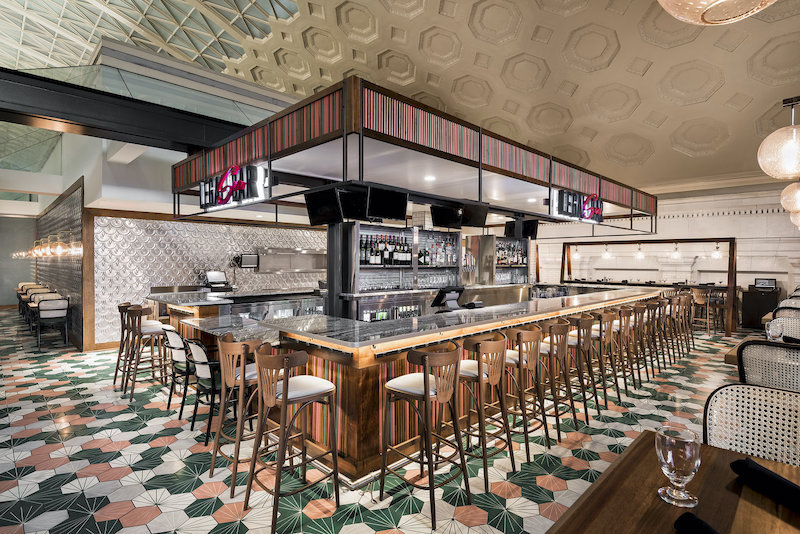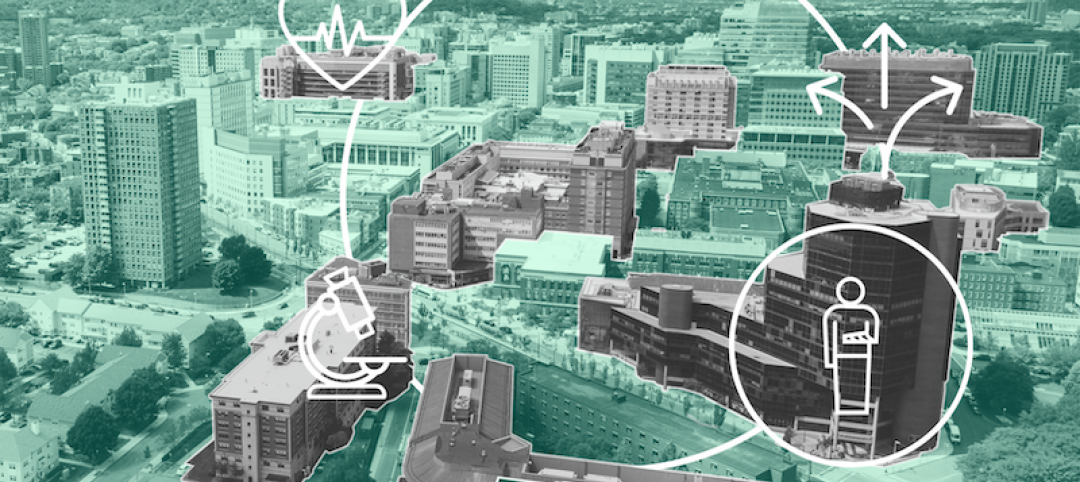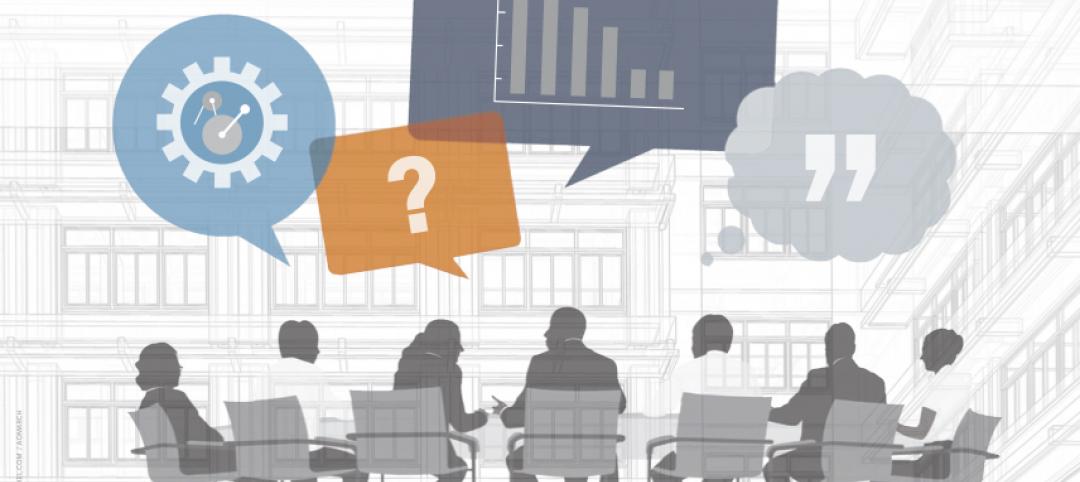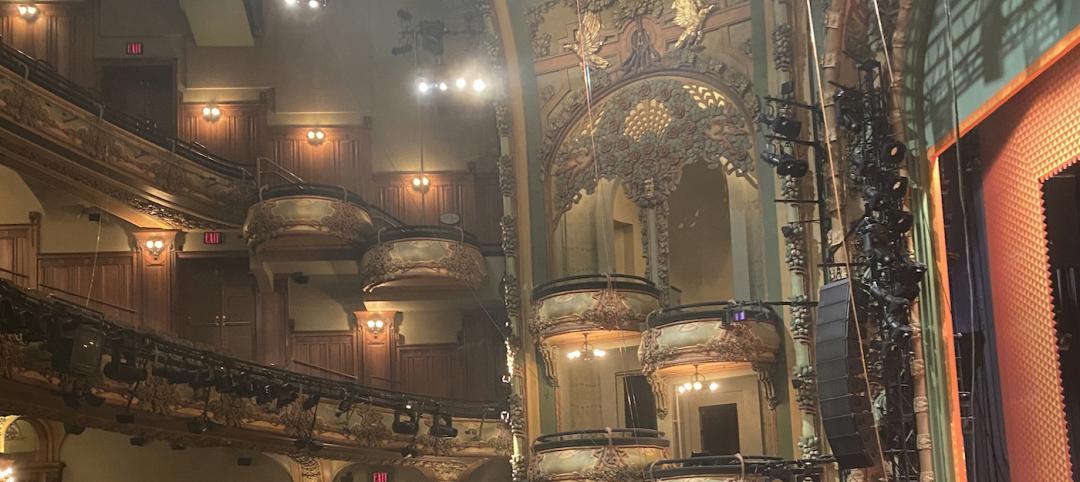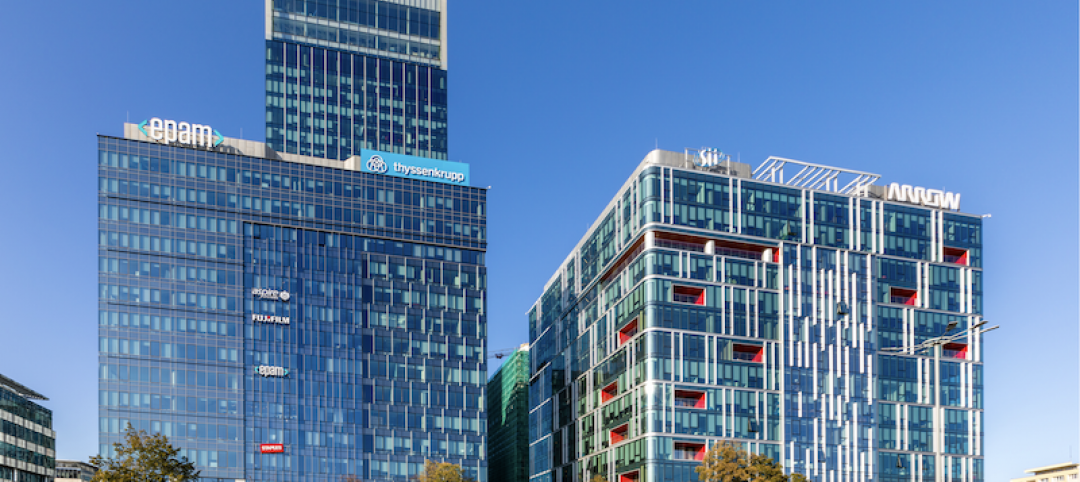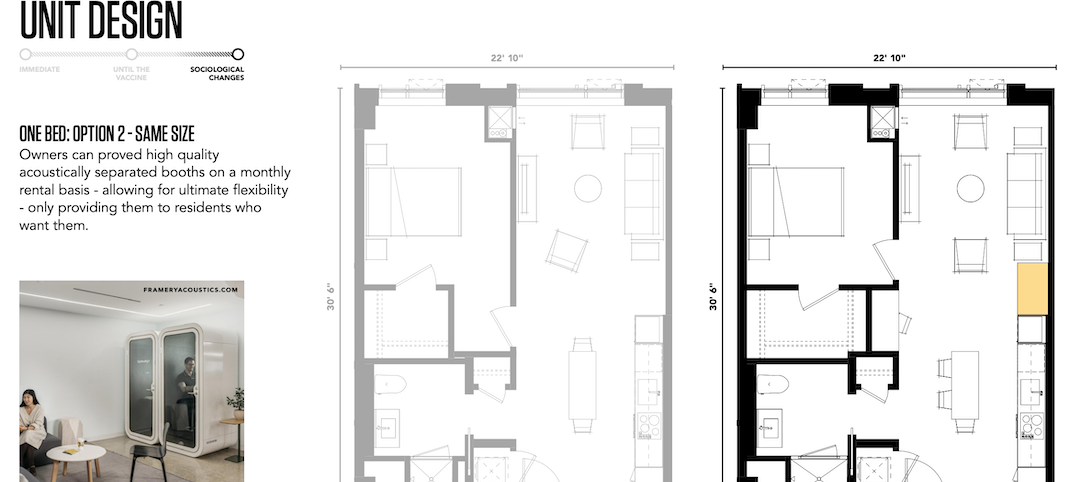Tens of thousands of restaurants and hotel rooms in the U.S. have been vacant as a result of the novel coronavirus. The U.S. Bureau of Labor Statistics estimates that the leisure and hospitality sector lost 7.7 million jobs in April alone, with restaurants taking most of that hit, and the sector’s unemployment rate soared to 39%.
Even in states like Georgia that reopened their economies earlier than most, customers have been reluctant to go to restaurants whose staffs are wearing masks, checking patrons’ temperatures, and using disposable placemats. The Texas Restaurant Association estimates that at least 12% of restaurants in the state had closed permanently due to the virus’s outbreak.
Getting customers to book a room and reserve a table again is going to take more than shuffling some furniture around. “We’re going to have to redesign the word ‘safe’ to help guests understand cleanliness,” says David Shove-Brown, Partner and Principal with //3877, a boutique design firm based in Washington D.C., with hospitality and restaurant design practices.
“As any business now, restaurants will need to convey what the brand, ownership, and staff are doing to ensure they are implementing even higher cleaning standards than before,” says Lesley Hughes Wyman, RID, ASID, IIDA, NEWH, Partner and Principal with MatchLine Design Group, a Dallas-based interior design firm whose specialties include hotels, casinos, and convention centers.
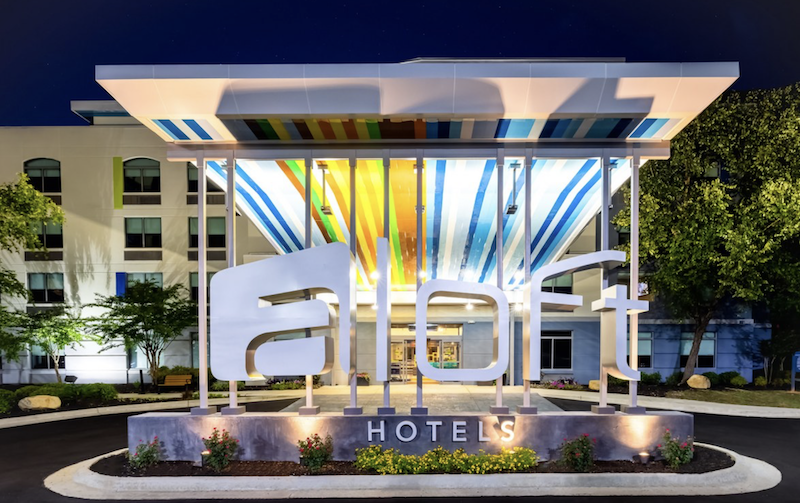
//3877 was the lead architect on the complete conversion of the 100-key Aloft Hotel in Columbia, S.C., which opened in the Summer of 2018 and included a new lobby. The firm believes that hotels will need to convince guests that they are staying a safe environment. Image: The Rohm Group
FLEXIBILITY AND STAFF TRAINING ARE KEYS TO REOPENING SUCCESSFULLY
Wyman sees flexibility as the key, “where options that allow varied gathering reconfigurations are paramount.” Griz Dwight, AIA, LEED AP, Principal and Owner of GrizForm Design Architects in Washington D.C., says his firm has been talking with many of its hospitality clients about how to reconfigure a space’s layout so that it creates more of a circular pattern for foot traffic versus straight in and out. In terms of restaurant design, “we might see more loose tables and fewer banquettes and booths,” or on the other hand “more intimate, secluded spaces” that incorporate four-top booths and private areas, says Dwight. Bar stools will need to be spread out to give patrons more room.
The three design executives espouse nonporous cleanable fabrics, preferably with antimicrobial features. Shove-Brown speculates that hotels might bounce back a little quicker than restaurants “as they are easier to clean and allow safe social distancing.” Restaurants, he adds, will need to become “more adaptable,” and demonstrate “increased resilience” that will take more time to implement.
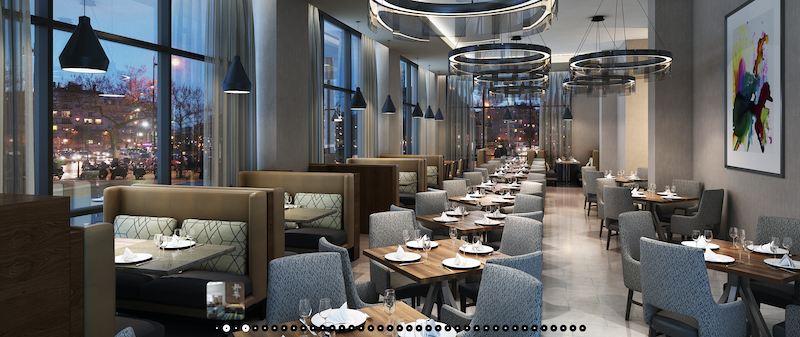
One of MatchLine Design Group's recent restaurant projects. To reopen, restaurants are going to need to reduce their capacities, at least initially, which will mean more spacing between tables and booths, and possibly more secluded and private spaces. Image: MatchLine Design Group
MatchLine is now also specifying products that can function with fewer touchpoints, such as automatic window treatments and lighting scenarios based on the guests’ location within a room. “We may even be looking to integrate air filtration systems within spaces and have that become part of the design itself,” says Wyman.
Hotels and restaurants must do a better job of alerting their customers of their new cleaning and infection-control regimens. But Shove-Brown is wary about design overkill. “People need to remember that this will pass. As designers and architects, we must look to temporarily fix the industry, not redesign it.” His temporary solutions include plastic dividers, UV lights, and touchless features in restrooms that “will ease guest discomfort.” He also believes that “clean” ultimately will come down to training staff to disinfect diligently and overtly “to ensure [that] guests feel safe.”
Related Stories
K-12 Schools | Jun 20, 2021
Los Angeles County issues design guidelines for extending PreK-12 learning to the outdoors
The report covers everything from funding and site prep recommendations to whether large rocks can be used as seating.
Coronavirus | May 17, 2021
Future pandemic preparedness at the medical district scale
The current COVID-19 pandemic highlights the concern that we will see more emergency events in the coming years.
University Buildings | Apr 29, 2021
The Weekly Show, April 29, 2021: COVID-19's impact on campus planning, and bird management strategies
This week on The Weekly show, BD+C Senior Editor John Caulfield interviews a duo of industry experts on 1) how campus planning has changed during the pandemic and 2) managing bird infestations on construction sites and completed buildings.
Multifamily Housing | Apr 22, 2021
The Weekly Show, Apr 22, 2021: COVID-19's impact on multifamily amenities
This week on The Weekly show, BD+C's Robert Cassidy speaks with three multifamily design experts about the impact of COVID-19 on apartment and condo amenities, based on the 2021 Multifamily Amenities Survey.
Industry Research | Apr 9, 2021
BD+C exclusive research: What building owners want from AEC firms
BD+C’s first-ever owners’ survey finds them focused on improving buildings’ performance for higher investment returns.
Coronavirus | Mar 31, 2021
Theatrical fog formula approved as antimicrobial air treatment
At least two solutions are being used to make ventilation systems safer.
Office Buildings | Mar 30, 2021
WELL Institute certifies a gigantic office complex with its highest health and safety rating
Poland’s Olivia Business Center one of the first to install ion air purification devices.
Multifamily Housing | Mar 27, 2021
Designing multifamily housing today for the post-Covid world of tomorrow
The multifamily market has changed dramatically due to the Covid pandemic. Here's how one architecture firm has accommodate their designs to what tenants are now demanding.
Office Buildings | Mar 26, 2021
Finding success for downtown office space after COVID-19
Using the right planning tools can spur new uses for Class B and C commercial real estate.
Coronavirus | Mar 11, 2021
The Weekly show, March 11, 2021: 5 building products for COVID-related conditions, and AI for MEP design
This week on The Weekly show, BD+C editors speak with AEC industry leaders about building products and systems that support COVID-related conditions, and an AI tool that automates the design of MEP systems.


